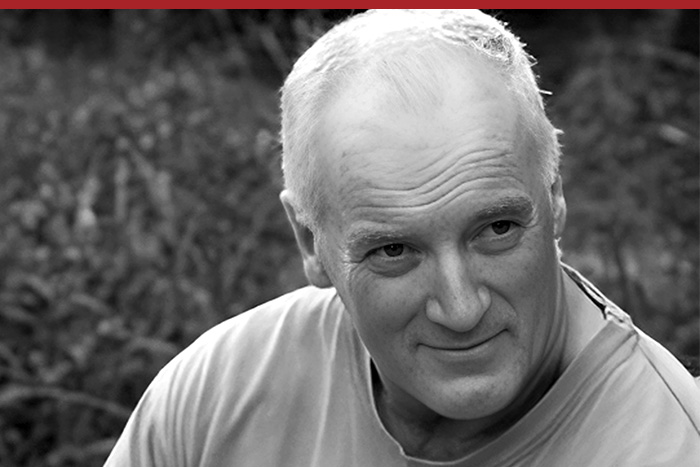We heard today of a man riding his push bike in Auckland who noticed a passer-by sneeze into his tissue and then throw the tissue to the ground. Understanding the significance of what had just happened our bike rider immediately turned around to request the walker pick up the tissue. He intended to explain to him the significance of his actions. He never made it. The bike fell in a hole, he fell off and he now resides in an Auckland hospital with a broken pelvis.
Like the scenes two weeks ago of closely-placed backpackers partying in Bondi Beach, Sydney and the (now) spread of Covid-19 throughout Bondi, or like those who gather in parks or on beaches against public guidelines the walker, and these other groups, do so without understanding or appreciating the huge system level variables at play.
Their thinking, their choices are often made without any real appreciation of what is at stake, or what is actually going on. It was Gregory Bateson who gave us the distinction between logical levels and logical types. Such behavior is often driven by sheer lack of information or knowledge; however, it represents failing to think at the required logical level. More often it is driven by whether the individuals involved like or dislike the effects of the interventions made by governments and other societal dynamics into their daily lives and behavior.
How countries, companies, communities and groups survive (or don’t) this pandemic will depend to an extent on whether their leaders are thinking at the right logical level and paying attention to the right logical types of things. If leaders can achieve this, then their vigilance and response to this crisis will be so much more effective and they and those they lead will be much better off.
One useful tool is such circumstance is the Boyd Cycle. But before describing what it is and how to use it, we need to first take a walk into the field of complex adaptive systems theory and its cousin, social-economic theory.
Let’s start with the really big picture first.
Societies are complex systems
This is no simple cliché but signifies, as common sense tells us, that societies are made up of ordered and disordered elements that interact simultaneously.
It is important to understand how signals within society behave and, to echo Benoit B. Mandelbrot, how they misbehave. Friedrich Hayek used the term catallaxy in 1978 to describe the order brought about by diverse and independent actors. This was just a year after Ilya Prigogine won the Nobel Prize in chemistry for showing how, in apparently chaotic systems, internal self-organizing could produce new forms and structures.
At the same time mathematicians and scientists were developing the new field of complex adaptive systems theory and we were learning that, with a significant enough shock, just about any stable system can be pushed into a state of chaos. In such states we cannot predict the outcome and it will almost certainly not be a return to order that existed before the shock to the system. Systems theory call such moments bifurcation points.
The order arises from elements interacting with one another and changing their behavior as informational signals are perceived. Ralph Stacey has described this same process happening within organizations and describes the elements as complex responsive social processes.
No individual agent, such as a political leader or a central bank, can access and assess all the broiling tacit information dispersed within and amongst all the different independent actors. Put simply, no single person can control or predict where the system will end up in such times, as we have recently seen in Washington.
A critical assumption of this paper is that we are in the middle of one such major shock to the world order, that we are moving into and through a period of severe disequilibrium and the outcome at the end is inherently unpredictable – to complex adaptive systems theorists this is called a bifurcation point. The fact that the outcome is entirely unpredictable may scare the pants off many, but for any with a Buddhist or Daoist orientation the essential ephemeral and fluid nature of existence is their friend.
Price as a canary
Like the proverbial canary in the coal mine, price was a critical early signal to Hayek. In particular price volatility. For example, changes to the prices of things signal their relative scarcity with a higher price acting as an incentive to the consumer to buy less and to the supplier to supply more. These independent actors adapt to small signals, day by day and week by week, across a plethora of goods and services. For example, a barrel of oil is cheaper than a glass of beer in some countries as I write.
Bifurcation moments at the level of a whole society or even the global order are not simply defined by a moment of high price volatility which then leads to a period of confusion, but often arise due to unpredictable and violent disruptions, which lead to permanent societal change. An avalanche would be the stereotypical image.
Unfortunately, in this present moment, real events obviate the need for analogies. After years of supressed asset price volatility, asset prices have become more volatile than at any time, as shown from data coming out of the US Federal Reserve and other countries.
If you would like access to this data then simply email Paul O’Neill There have never been higher rates of change in price volatility, or for that matter other key variables. There is no running away from it … we are entangled in a net of bio-socio-economic complexities:
- multiple trade wars,
- a global export shock,
- a global import shock,
- an energy shock, and
- multiple domestic demand shocks,
all of which are occurring, both in sequence and in parallel, with one another. For example, US banks made a quarter of a trillion dollars in new loans to companies, which is twice as much lending as they would ordinarily experience in a full year and they did so in a single week… “never is a long, long time”.
Whilst the novel coronavirus initially acted as the catalyst, our reactions to it have become both the accelerant and the amplifier to the pre-virus kindling. We anticipate there are going to be a lot of “never happened before” examples emerging.
In academic life, The Wall Street Crash of 1929, subsequent Great Depression and World War II are events with which Economic History lecturers have terrified their students for decades. The socio-economic destruction was severe; the geopolitical and military escalations were proverbial. This pandemic triggered social and economic bifurcation of 2020 outsizes that of the Stock Market Crash of 1929, and is the largest economic event that any of us have ever lived through. We are about to find out how far our modern and post-modern human societies are from “anti-fragile”, to use Nassim Taleb’s term.
The Boyd Cycle: A decision and action guide
In such circumstances we would all benefit, and especially our leaders, with useful fit for purpose techniques for thinking and deciding how to act under present circumstances. We are in extreme times. So, the question arises as to what techniques people use in the most extreme situations to make decisions? If these techniques work in the most drastic scenarios, they have a good chance of working for us. If we turn to the military world then their ways of thinking and deciding are constantly tested in the laboratory of conflict. If they weren’t agile, versatile, and effective, the techniques would quickly be replaced by others.
John Boyd of the US Air Force developed one such technique that is ideal for the conditions and circumstances in which we find ourselves. It Is an invaluable tool for leaders in how to think and decide in times of chaos. It is known by some as the OODA loop. This stands for Observe-Orient-Decide-Act. It has become a vital technique in litigation, business, law enforcement, and military strategy. A very useful source of detail on the Boyd Cycle and its use is to be found here. It is very similar to a model that will be published in the next week by David Snowden and his colleagues at Cognitive Edge and created specifically around the current challenge facing humanity.
The Boyd Cycle consists of four may phases of thought …
Observe: What are we noticing? Everything and as much as we can at all times
Decide: The phase of making choices based on the information and orientation, which must always be an implied hypothesis to be tested
Orient: In which cognitive direction do we look? The one that will allow us to anticipate, stages and events that require decision and action. Or alternatively, what should we be paying attention to trigger decisions and actions?
Act: The actual behavior put into place; the test.
It enables a leader, a group, a company to act with high agility, relative to others, as new data comes to their attention. Agility is at this moment in time a defining competitive and survival advantage for companies and individuals.
Embedded in the technique is permission to change one’s decisions and actions, by either a little or a lot as events develop in order to ensure the highest state of preparedness. As a leader, context setting (being able to interpret and frame what is going on) is mission critical to preparing people’s to adapt their decisions and actions with agility and so the Orientation element of the technique is paramount.
During a pandemic, the core orientation leaders and their teams need is a keen understanding of how geometric progressions play out in the real world: as humans, we really do not have an intuitive grasp of geometric progressions, until their overwhelming impact has already arrived.
The graphs currently available from the Financial Times that explain the relatively different rates of spread depicted so beautifully by John Burn-Murdoch and his colleagues portray beautifully and clearly geometric progressions in action across the major countries. If you would like more understanding of the importance of geometric progressions, the types of progressions, how they combine and how they apply to the world as it is in this pandemic then please email Paul O’Neill
An immediate consequence of this orientation as one quickly realizes that, in lieu of intensive and extensive testing, the actual case count can be misleading but the rate at which the death count is doubling (every two days? three days? ten days?) is probably a more reliable measure of the rate of change at which the disease is progressing.
The German philosopher Arthur Schopenhauer noted that all truth passes through three stages:
- Ridicule
- Violently opposed
- Accepted as “self-evident
The difference in the mental, emotional, physical and financial state of preparedness between the early enlightened and the latterly enlightened is profound depending on which one of these three stages one is caught within. Those with an early and systems level orientation to geometric progressions are now setting up lines of credit, ordering critical inventories, reducing spare operational capacity, rearrange their finances into low risk “safe-havened” portfolios, preparing their team leaders and readying their staff members for remote working. Clearly, this state of readiness has positive spill-over effects to one’s home life as well: they have been oriented in advance, they know what to do and when to do it.
For example, the wife of a business owner had been receiving cancer treatment. This had depleted her oestrogen levels, causing osteoporosis. Once the geometric progression was explained and how the import supply shock could impact drug availability, he also understood that elective surgery would be cancelled for months. Accordingly, the announcement of the first Australian death was his tripwire alarm: a trigger that signalled to him to calmly ensure increased holdings of his wife’s medication and arrange for her surgery to be fast tracked.
The mental models, frames, levels and techniques of thinking used by leaders of companies in the social and economic bifurcation that is this pandemic, the likes of which we have never seen in human history will in large way determine which companies come out the other side. These models, frames and techniques of thinking all constitute what the late John Boyd would have called our Orientation. The agility with which leaders choose and use the appropriate orientation will determine who flourish and who flounder.
There is a bright spot in this otherwise grey landscape: never has human society been so well-connected with so much information flowing and therefore never have we as a species been in a better place or better configured to find a new equilibrium point on the other side.







